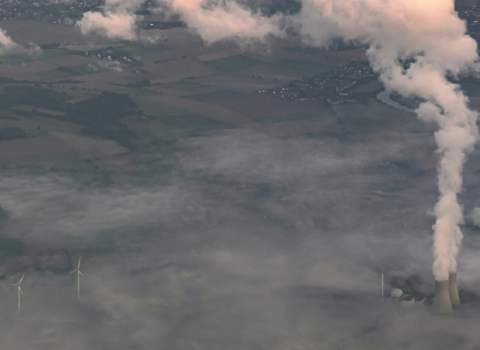Geochemist Douglas Connelly tells Science|Business how his project hopes to prove sub-sea carbon sequestration is a safe and effective tool for tackling global warming

Douglas Connelly is leading an EU-funded research project that is developing new tools and strategies to monitor burial sites for carbon dioxide. Right now, he’s on board the RRS James Cook research ship, at a site in the North Sea off Scotland.
Carbon capture and sequestration, or CCS, involves trapping waste carbon dioxide from coal and gas power stations and burying it underground, in this case, in depleted offshore oil and gas fields. The UN Intergovernmental Panel on Climate Change (IPCC) has concluded CCS is critical to tackling climate change in the most cost-effective way.
But there is concern about ensuring CO2, once buried, will stay buried.
Here, Connelly, who works at the UK’s National Oceanography Centre, tells Science|Business about the €15.9 million STEMM-CCS project (Strategies for Environmental Monitoring of Marine Carbon Capture and Storage) - and the broader fight against climate change.
The purpose of your journey out to sea is to test the effectiveness of new technology for detecting seabed CO2 leakage. What kind of equipment do you need for this, and who is involved in the study?
We are employing techniques such as acoustic listening devices to detect underwater bubbles, and then applying advanced bubble analysis approaches to determine the volume of gas released. Researchers from the University of Southampton are pioneering this. We are also using newly developed chemical sensors to quantify the dissolved gas in the water and we have developed a new suite of sensors to determine fluxes of chemicals across the water. This has involved researchers from Southampton, but also the National Oceanography Centre, the Helmholtz Centre for Ocean Research Kiel, Max Planck and the Alfred Wegener Institute for Polar and Marine Research.
Why do we need CCS for controlling emissions?
CCS is only one of a set of tools we will have to apply to meet the required reductions in carbon dioxide outlined in the IPCC report for keeping global temperature rises in check. The use of renewables is increasing, but we may not be able to switch to this energy source fast enough to reduce emissions. The manufacture of cement, steel and other industrial processes produce large amounts of CO2, and there are few options to change to low carbon emitting techniques. CCS is a proven technology that has been used at the Sleipner site in the Norwegian sector of the North Sea by Equinor (formerly Statoil) for over 20 years, storing millions of tonnes of CO2 in a sub-seabed oil and gas well or aquifer.
If underwater burial is to be one of the answers to controlling emissions, how concerned should we be for sea life?
Part of what we are doing in developing sensing and monitoring techniques is so we can tell if there is leakage - realistically, it’s very unlikely - and this will trigger further studies on the impacts of [any] such leakage. There has been no measurable impact – or leakage – from the storage of CO2 at the Sleipner reservoir, for example. The use of depleted oil and gas reservoirs offers more surety around storage as they are well studied – we know the volumes that can be stored and we know the area of the seabed that overlies these sites.
How many CCS burial sites will the planet need to meet climate goals?
There have been specialist reports into the global volumes of CCS reservoirs and I have seen ranges of up to 100 gigatonnes (so, a lot!) of storage, but I would defer to other people with more expertise on this.
How seriously are other big emitters, like the US and China, considering this approach?
The US Department of Energy has just started two studies looking at the feasibility of offshore CCS in the Gulf of Mexico. The US already does a lot of CCS for enhanced oil recovery, but this is mainly a cyclical system where the CO2 is recaptured and used again; so it’s not really long-term storage. Japan, South Korea and Australia are all exploring offshore CCS and Japan is already doing a trial study. China is exploring onshore CCS at present but also has offshore CCS on its radar.
The UK government controversially cancelled funding for CCS research in 2015. Does it plan to revive its interest?
CCS is definitely back on the agenda for the UK government and we await more solid proposals from the Department for Business, Energy and Industrial Strategy.





 A unique international forum for public research organisations and companies to connect their external engagement with strategic interests around their R&D system.
A unique international forum for public research organisations and companies to connect their external engagement with strategic interests around their R&D system.